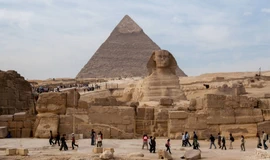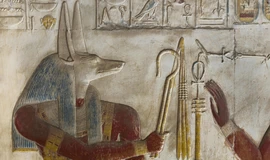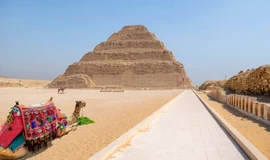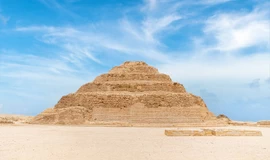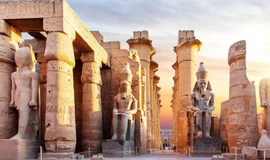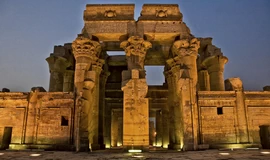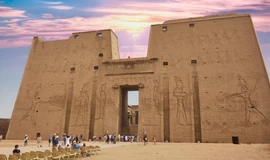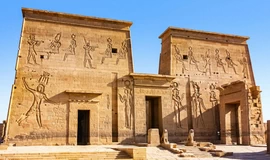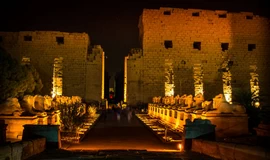Top 30 Most Powerful Ancient Egyptian Gods and Goddesses
Ancient Egypt, with its rich tapestry of history, mythology, and culture, boasts a pantheon of gods and goddesses that have fascinated scholars and enthusiasts for centuries. These deities, each possessing unique powers and attributes, played a pivotal role in the daily lives and beliefs of the ancient Egyptians. In this journey through the divine realms, we will explore the top 34 ancient Egyptian gods and goddesses, shedding light on their powers and significance.
1.Ra (Re): The Sun God
Ra, the mighty sun god, was revered as the creator of all life. Associated with the sun, he symbolized warmth, light, and growth. The city of Heliopolis was a center for Ra worship, and
the Great Sphinx at Giza is believed to represent him.
2. Isis: Goddess of Magic and Motherhood
Isis, a prominent goddess, was revered for her magical prowess and maternal nature. She played a crucial role in the resurrection of Osiris, her husband, and was a symbol of protection and healing.
Philae and Luxor are destinations where her worship was particularly strong.
3.Osiris: God of the Afterlife
Osiris, lord of the underworld, presided over the afterlife and judged the souls of the deceased. His myths centered around death, rebirth, and eternal life.
Abydos, where Osiris was believed to be buried, is a significant pilgrimage site.
4.Horus: God of Kingship and the Sky
Horus often depicted with a falcon head, symbolized kingship and the sky. The Pharaohs considered themselves the living embodiment of Horus.
Edfu, with its grand Temple of Horus, is a testament to the reverence for this deity.
5. Anubis: Guardian of the Dead
Anubis, the jackal-headed god, guided souls through the afterlife and presided over mummification rituals. His role as the guardian of the dead was crucial, and his cult centers included
Saqqara and Heliopolis.
6. Thoth: God of Wisdom and Writing
Thoth, portrayed as an ibis or a baboon, was the god of wisdom, writing, and magic. The city of Hermopolis was a major center of Thoth worship, emphasizing the importance of knowledge and intellect.
7. Sekhmet: Goddess of War and Healing
Sekhmet, a lioness-headed goddess, embodied the duality of war and healing. She was a fierce protector of Ra and a bringer of plagues.
The Temple of Karnak in Luxor housed a chapel dedicated to Sekhmet.
8. Bastet: Goddess of Home, Fertility, and Protection
Bastet, often depicted as a lioness or a domestic cat, was a goddess associated with home, fertility, and protection. The city of Bubastis was a major center of her worship, and her cult spread throughout Egyp .
9. Ptah: Creator God and Patron of Craftsmen
Ptah, the creator god, was believed to have shaped the world with his thoughts. Memphis, the ancient capital, housed the Temple of Ptah, emphasizing his role as a patron of craftsmen and artisans.
10. Ma'at: Goddess of Truth and Justice
Ma'at, the goddess of truth and justice, personified cosmic order. She played a vital role in the judgment of souls in the afterlife. The Feather of Ma'at, symbolizing truth, was weighed against the heart of the deceased.
11. Amun: King of the Gods
Amun, the king of the gods, represented the hidden and mysterious aspects of the divine. The Karnak Temple Complex in Luxor, dedicated to Amun, is one of the largest religious structures in the world.
12. Hathor: Goddess of Love, Music, and Motherhood
Hathor, a cow-headed goddess, embodied love, music, and motherhood. Her worship was prevalent in Dendera, where the beautifully preserved Temple of Hathor stands as a testament to her significance.
13. Nephthys: Funerary Goddess and Sister of Isis
Nephthys, associated with funerary rites, was a sister to Isis and played a supportive role in the resurrection of Osiris. Her name translates to "Lady of the House," emphasizing her connection to the home.
14. Khonsu: God of the Moon
Khonsu, the moon god, was associated with timekeeping and healing. The Temple of Khonsu at Karnak exemplifies the importance of lunar cycles in ancient Egyptian religious practices.
15. Geb: God of the Earth
Geb, the god of the earth, was often depicted lying beneath the sky goddess Nut. His association with the earth made him a vital deity in agricultural practices. The city of Heliopolis was a center for his worship.
16. Nut: Sky Goddess and Mother of Gods
Nut, the sky goddess, was depicted as a woman arching over the earth. She was the mother of Osiris, Isis, Set, and Nephthys. The significance of Nut in Egyptian cosmology is evident in the Book of the Dead.
17. Khnum: God of the Nile and Creator of Humankind
Khnum, depicted with a ram's head, was believed to have shaped the bodies of humans on his potter's wheel. His association with the Nile made him a vital deity in agricultural societies. The Temple of Khnum at Esna is a notable site.
18. Tawaret: Goddess of Childbirth and Fertility
Tawaret, a protective goddess with a hippopotamus head, was revered by expectant mothers for a safe childbirth. Her statues often adorned households to ward off evil spirits. Kom Ombo, with its dual temples, featured Tawaret worship.
19. Sobek: God of the Nile and Crocodiles
Sobek, the crocodile-headed god, symbolized the untamed power of the Nile and was both feared and revered. The Fayoum region, with its crocodile-filled lakes, was a significant center for Sobek worship.
20. Wadjet (Uadjet): Cobra Goddess of Protection
Wadjet, often depicted as a cobra, was a protective goddess associated with Lower Egypt. Her symbol, the uraeus, adorned the crowns of pharaohs as a symbol of divine protection.
21. Shu: God of Air and Atmosphere
Shu, the god of air and atmosphere, was a fundamental deity in Egyptian cosmogony. He separated the sky (Nut) from the earth (Geb), allowing life to flourish. His importance is reflected in the Ennead, the nine major deities of Heliopolis.
22. Tefnut: Goddess of Moisture and Dew
Tefnut, the goddess of moisture and dew, was the twin sister of Shu. Together, they gave rise to the elements necessary for life. The city of Heliopolis held Tefnut in high regard.
23. Hapi: God of the Nile Flood
Hapi, often depicted with a full belly, personified the annual flooding of the Nile, bringing fertility to the land. The Grand Ethiopian Renaissance Dam and
the Aswan High Dam are modern monuments that continue the legacy of Hapi's importance.
24. Atum: Creator Deity and Solar God
Atum, a self-created deity, represented the setting sun and the evening aspect of Ra. The city of Heliopolis, with its religious significance, honored Atum as a creator god.
25. Seshat: Goddess of Writing and Wisdom
Seshat, the goddess of writing and wisdom, was often depicted with a seven-pointed crown. She assisted in the judgment of souls and was associated with the recording of historical events. Her worship was prominent in the city of Sais.
26. Min: God of Fertility and Harvest
Min, depicted with an erect phallus symbolizing fertility, was a god associated with the harvest. The city of Akhmim held an annual festival dedicated to Min, celebrating the bounty of the land .
27. Neith: Goddess of War and Hunting
Neith, a warrior goddess, was associated with war and hunting. Her worship was prevalent in the city of Sais, where she was revered as a protective deity. The Greeks identified Neith with their goddess Athena.
28. Selket (Serqet): Scorpion Goddess of Protection
Selket, the scorpion goddess, was a protective deity invoked in medical and magical rituals. Her presence was believed to counteract the effects of scorpion stings. The Temple of Kom Ombo featured Selket as a significant figure.
29. Khert-Neter: God of Divine Time
Khert-Neter, the god of divine time, was associated with the eternal cycles of life, death, and rebirth. His significance is deeply ingrained in the funerary traditions of ancient Egypt.
30. Babi: God of Baboons and Aggression
Babi, the god of baboons and aggression, was a deity with a dual nature. While associated with aggression, he also played a role in the rebirth of the deceased. His cult was particularly strong in the region of Asyut.
